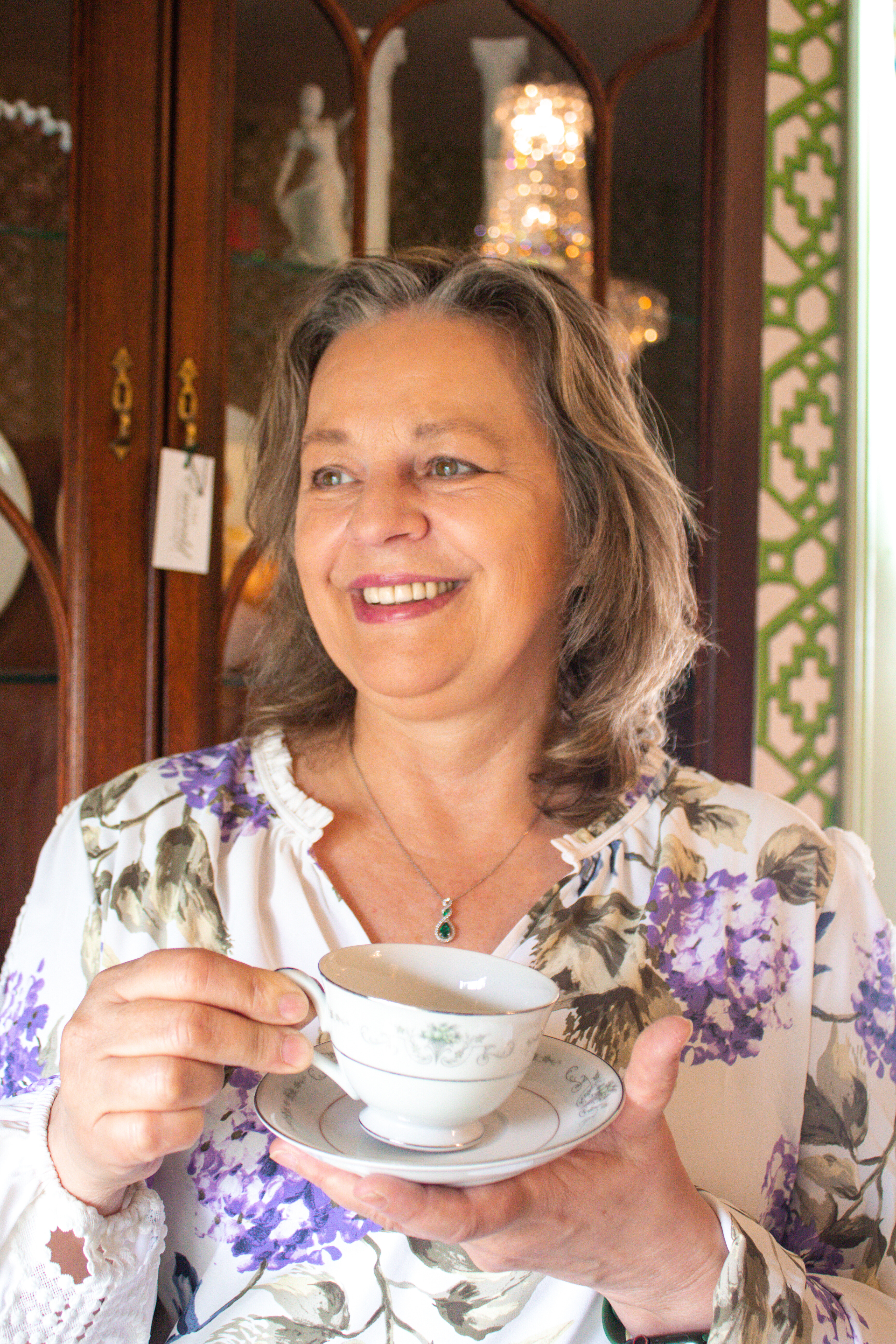The Surprising Origins of Afternoon Tea and High Tea,
- Teresa Reynolds

- Aug 1, 2023
- 4 min read

Imagine stepping into a world of elegance and tradition, where the clinking of delicate teacups mingles with the soft murmurs of conversation. These are the enchanting sights and sounds that accompany the cherished rituals of afternoon tea and high tea. But have you ever wondered where these beloved British traditions originate? Prepare to be transported back in time as we embark on a journey through history, uncovering the surprising origins of afternoon tea and high tea. From tea ceremonies to social customs, we will delve into the rich tapestry of British culture and discover how these timeless practices continue to shape society today. So, grab a cuppa and join us as we explore the captivating story behind afternoon tea and high tea, raising a teacup to the joys of heritage and the enchantment of shared moments with loved ones.,
Tea Ceremonies and Social Customs
Understanding the origins of afternoon tea and high tea wouldn't be complete without delving into the tea ceremonies and social customs that have shaped these beloved British traditions. Tea ceremonies, with their meticulous rituals and attention to detail, were an integral part of Chinese and Japanese culture for centuries before making their way to Britain. The elegance and grace of these ceremonies captivated the British aristocracy and soon became a symbol of refinement and sophistication.
In the 17th century, Catherine of Braganza, the Portuguese wife of King Charles II, brought her love for tea to the British court. As the popularity of tea grew, so did the desire to emulate the tea ceremonies of the East. British society eagerly embraced tea as a fashionable and luxurious beverage, elevating the act of tea-drinking to a refined and elegant affair.
During this time, social customs surrounding tea also began to evolve. Afternoon tea, which developed in the 1840s in Britain, became a way for the upper class to bridge the gap between breakfast and dinner. This light meal, typically served between 3 pm and 5 pm, allowed individuals to satisfy their hunger without spoiling their appetite for the evening meal. Afternoon tea quickly became a social event, with ladies donning their finest attire and gathering to indulge in tea, delicate finger sandwiches, scones, and pastries.
In contrast, high tea emerged as a more substantial meal consumed by the working class. Originating in the 18th century, high tea was enjoyed in the evenings by miners and laborers after a long day's work. Unlike the refined afternoon tea, high tea consisted of heartier fare, such as meat pies, bread, cheese, and boiled eggs. While afternoon tea was a leisurely and elegant affair, high tea was a practical and comforting meal that provided sustenance after a hard day's labor.
These tea ceremonies and social customs continue to hold a special place in British culture. Whether it's a formal afternoon tea at a luxurious hotel or a cozy high tea enjoyed at home, the rituals and customs surrounding tea create an atmosphere of warmth and connection. They invite individuals to slow down, savor the moment, and engage in meaningful conversations.
In a fast-paced world, tea ceremonies and social customs remind us to pause, appreciate the simple pleasures in life, and share moments of togetherness with loved ones. They are a testament to the enduring power of tradition and the ability of a simple cup of tea to bring people together across generations. So, as you raise your teacup, take a moment to appreciate the fascinating history and cultural significance behind afternoon tea and high tea, and let them serve as a reminder to cherish the timeless traditions that enrich our lives.,
In reflecting on the captivating history of afternoon tea and high tea, we are transported through time to an era where tea ceremonies and social customs played a pivotal role in British culture. These cherished traditions, with their origins deeply rooted in the fabric of society, continue to shape our understanding of heritage and the joy of coming together over a warm cup of tea.
Through the ages, afternoon tea and high tea have served as a gateway to connection and conversation, a blend of elegance and simplicity that unites friends and loved ones. As we sip from our delicate china cups, we pay homage to the generations before us who embraced the enchantment of tea, creating a space for camaraderie and companionship.
Embracing these timeless rituals, we not only underscore the importance of preserving our heritage but also reaffirm our commitment to cherishing the moments that bring us together. Let us invite those near and dear to partake in the magic of afternoon tea and high tea, sharing in the delicate flavors and the stories that bind us.
As we conclude this exploration into the surprising origins of afternoon tea and high tea, we realize the enduring power of tradition in shaping our lives. Let us celebrate the customs that have stood the test of time, opening our hearts and teapots to all who seek solace, connection, and a taste of the past.
So, raise your cup, dear reader, and join us in raising a toast to the traditions that have shaped us, and the traditions yet to be discovered. As we embark on this journey of tea and culture, let us remember the words of Arthur Wing Pinero, who once said, "Where there's tea, there's hope."





Comments